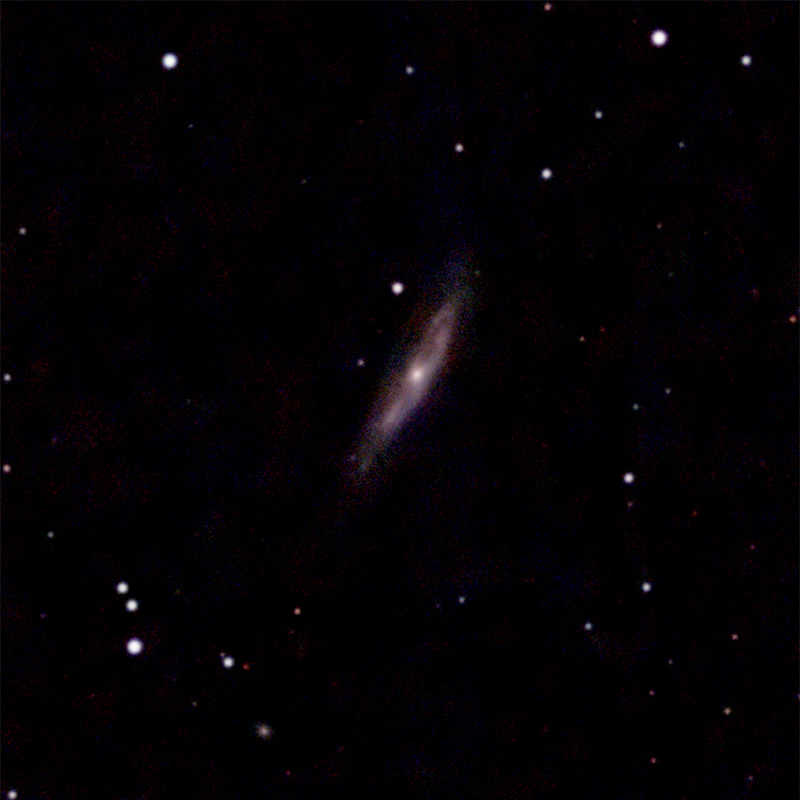M98

Credits: Keith Turnecliff, Nerja, Spain
M98 contains about a trillion stars as well as an abundance of neutral hydrogen gas and interstellar dust.
Because of the high amounts of gas and dust, there are numerous star-forming regions in the galaxy, especially in its nucleus and arms.
The nucleus itself is “active,” meaning that the center of the galaxy is more luminous than the rest of the galaxy.
M98 is located approximately 44 million light-years away and is traveling toward our Milky Way galaxy.
M98 was discovered in 1781 by Pierre Méchain, a colleague of Charles Messier, and is one of the faintest objects in Messier’s catalog.
It has a magnitude of 10.1, and observers will need at least a medium-sized telescope to see M98 well.
Facts about M98 by Keith Turnecliff
About 750 million years ago, Messier 98 may have interacted with the large spiral galaxy Messier 99. The two are now separated by a distance of 1,300,000 ly.
The best time to observe this galaxy is in May.

Best viewed with resolution 3840 x 2160.
Credits: Image courtesy of Starry Night Pro Plus 8, researched and implemented by Keith Turnecliff.